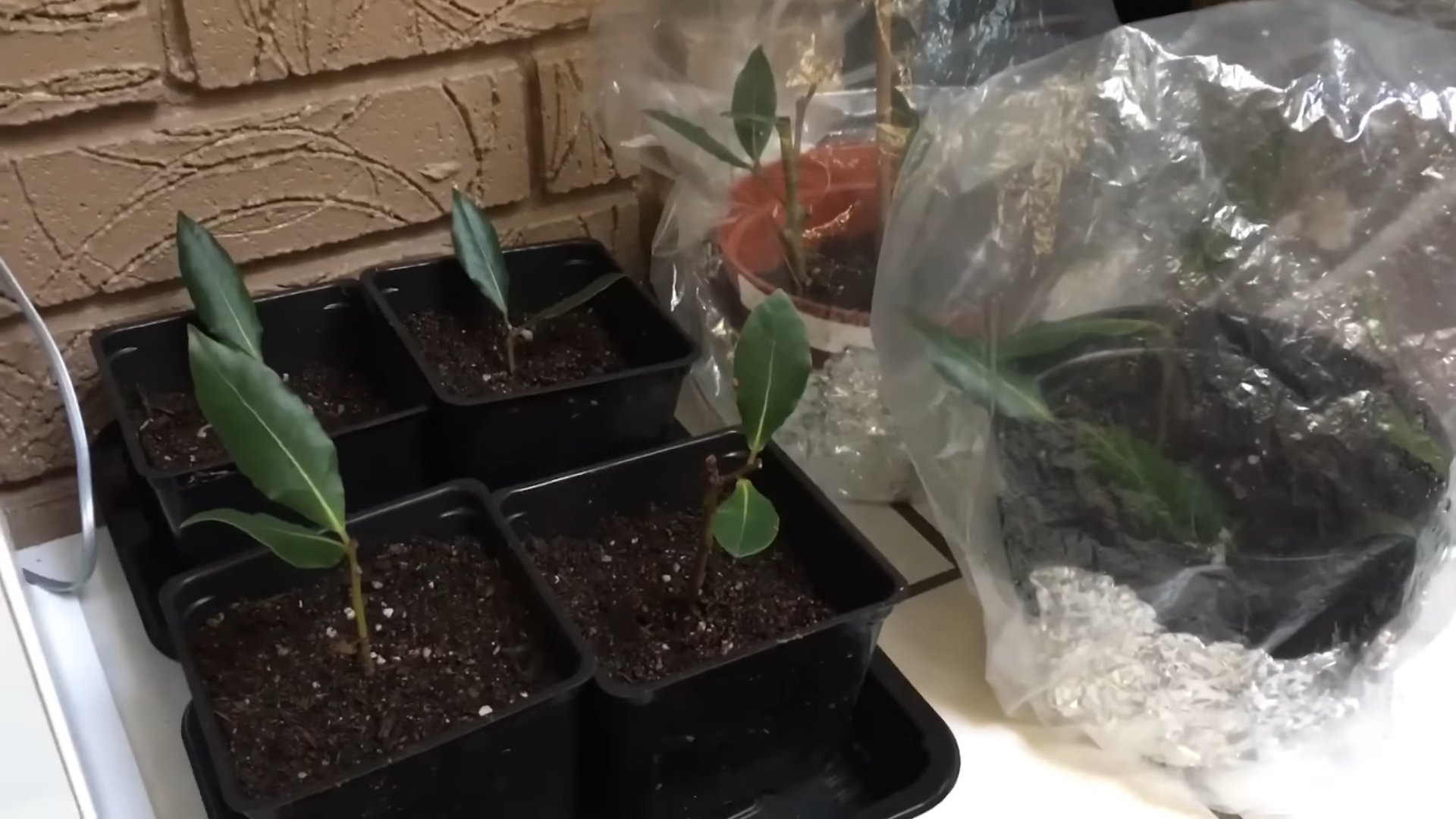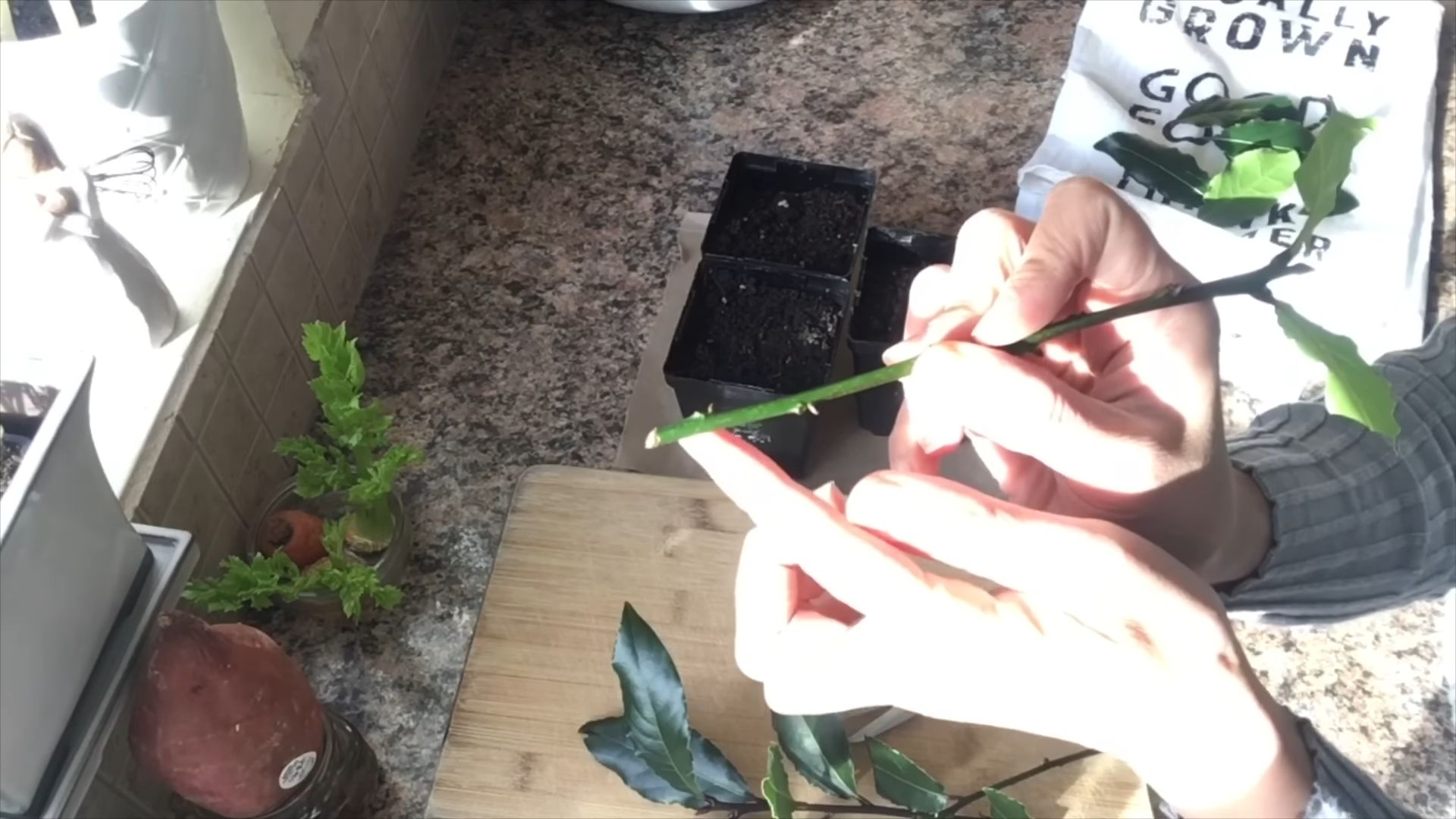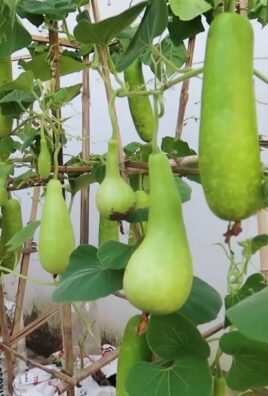Bay leaf propagation cuttings – ever dreamt of having an endless supply of fresh, aromatic bay leaves right at your fingertips? I know I have! Imagine never having to run to the store for that essential ingredient in your favorite soups, stews, and sauces. Well, dream no more! This DIY guide unlocks the secrets to easily propagating your own bay laurel tree from cuttings, bringing a touch of Mediterranean magic to your garden and kitchen.
Bay laurel, or Laurus nobilis, has a rich history, revered since ancient times. The Greeks and Romans crowned victors and heroes with bay leaf wreaths, symbolizing glory and honor. Beyond its symbolic significance, the bay leaf has been a culinary staple for centuries, adding depth and complexity to dishes around the world.
But why bother with bay leaf propagation cuttings when you can just buy dried leaves? Simple: freshness and flavor! Fresh bay leaves have a brighter, more nuanced aroma than their dried counterparts. Plus, growing your own is incredibly rewarding and surprisingly easy. This DIY trick is perfect for anyone looking to expand their herb garden on a budget, reduce their reliance on store-bought ingredients, and enjoy the satisfaction of nurturing a plant from a simple cutting. So, grab your gardening gloves, and let’s get started on this exciting propagation journey!

Propagating Bay Laurel from Cuttings: A Gardener’s Guide
Hey there, fellow plant enthusiasts! Ever wished you could have more of that fragrant bay laurel in your garden? Well, you’re in luck! Propagating bay laurel from cuttings is totally doable, and I’m here to walk you through the whole process. It might seem a little intimidating at first, but trust me, with a little patience and the right steps, you’ll be well on your way to expanding your bay leaf collection. Let’s get started!
What You’ll Need
Before we dive in, let’s gather all the necessary supplies. Having everything ready beforehand will make the process much smoother. Here’s what you’ll need:
- Healthy Bay Laurel Plant: This is your source for cuttings. Choose a plant that looks vigorous and free from diseases.
- Sharp, Clean Pruning Shears or Knife: Sterilize your tools with rubbing alcohol to prevent the spread of diseases.
- Rooting Hormone: This will significantly increase your chances of success. I prefer a powdered rooting hormone, but gel or liquid works too.
- Rooting Medium: A well-draining mix is crucial. I like to use a mix of perlite and peat moss (or coco coir) in equal parts. You can also use a commercial seed starting mix.
- Small Pots or Containers: Choose pots with drainage holes. 2-3 inch pots are ideal.
- Clear Plastic Bags or a Humidity Dome: This will help maintain high humidity around the cuttings.
- Spray Bottle with Water: For misting the cuttings.
- Warm, Bright Location: Indirect sunlight is best. Avoid direct sunlight, which can scorch the cuttings.
Taking the Cuttings
The timing of taking cuttings is important for success. I’ve found that late spring or early summer is the best time, when the plant is actively growing.
- Select Healthy Stems: Look for semi-hardwood stems that are about 4-6 inches long. These are stems that have started to mature but are not completely woody. Avoid stems that are too young and flexible or too old and woody.
- Make the Cut: Using your sterilized pruning shears or knife, make a clean cut just below a leaf node (the point where a leaf grows from the stem). A slanted cut can help with water absorption.
- Prepare the Cutting: Remove the leaves from the bottom 1-2 inches of the cutting. This will prevent them from rotting in the rooting medium. You can also trim the remaining leaves in half to reduce water loss.
Rooting the Cuttings
Now comes the exciting part – encouraging those cuttings to grow roots!
- Apply Rooting Hormone: Moisten the bottom inch of the cutting and dip it into the rooting hormone. Tap off any excess powder.
- Plant the Cutting: Make a hole in the rooting medium with a pencil or your finger. Gently insert the cutting into the hole, being careful not to rub off the rooting hormone. Firm the medium around the cutting to provide support.
- Water Thoroughly: Water the rooting medium gently until it is evenly moist but not soggy.
- Create a Humid Environment: Place the pot inside a clear plastic bag or under a humidity dome. This will help maintain high humidity, which is essential for root development. If using a plastic bag, make sure it doesn’t touch the leaves of the cutting. You can use skewers or straws to prop it up.
- Provide Warmth and Light: Place the cuttings in a warm, bright location with indirect sunlight. Avoid direct sunlight, which can overheat the cuttings.
Caring for the Cuttings
Patience is key during this stage. It can take several weeks or even a couple of months for roots to develop.
- Maintain Humidity: Check the humidity level regularly. If the plastic bag or humidity dome is not creating enough condensation, mist the cuttings with water every few days.
- Water Carefully: Keep the rooting medium consistently moist but not soggy. Overwatering can lead to rot. Allow the top inch of the medium to dry out slightly between waterings.
- Provide Air Circulation: Open the plastic bag or humidity dome for a few minutes every day to provide air circulation and prevent fungal growth.
- Check for Root Development: After a few weeks, gently tug on the cuttings to check for resistance. If you feel resistance, it means roots have started to develop. You can also gently remove a cutting from the pot to inspect the roots.
Potting Up the Rooted Cuttings
Once the cuttings have developed a good root system, it’s time to pot them up into individual pots.
- Choose a Potting Mix: Use a well-draining potting mix that is suitable for bay laurel. A mix of potting soil, perlite, and compost is a good option.
- Gently Remove the Cutting: Carefully remove the rooted cutting from the rooting medium, being careful not to damage the roots.
- Plant the Cutting: Plant the cutting in the new pot, making sure the top of the root ball is level with the soil surface.
- Water Thoroughly: Water the newly potted cutting thoroughly until water drains out of the drainage holes.
- Provide Care: Place the potted cutting in a bright location with indirect sunlight. Water regularly, allowing the soil to dry out slightly between waterings. Fertilize with a balanced fertilizer every few weeks during the growing season.
Hardening Off
Before planting your newly propagated bay laurel outdoors, it’s important to harden it off. This process gradually acclimates the plant to outdoor conditions.
- Gradual Exposure: Start by placing the potted cutting outdoors in a sheltered location for a few hours each day. Gradually increase the amount of time it spends outdoors over a period of one to two weeks.
- Protect from Harsh Conditions: Protect the cutting from direct sunlight, strong winds, and extreme temperatures during the hardening off process.
- Monitor the Plant: Watch for signs of stress, such as wilting or leaf burn. If you notice any stress, bring the plant back indoors and gradually reintroduce it to outdoor conditions.
Planting Outdoors
Once the bay laurel cutting has been hardened off, it’s ready to be planted outdoors.
- Choose a Location: Select a location with well-draining soil and partial to full sun. Bay laurel prefers a slightly acidic soil.
- Prepare the Soil: Dig a hole that is twice as wide as the root ball and just as deep. Amend the soil with compost or other organic matter to improve drainage and fertility.
- Plant the Bay Laurel: Gently remove the bay laurel from the pot and place it in the hole. Backfill the hole with soil, firming it gently around the roots.
- Water Thoroughly: Water the newly planted bay laurel thoroughly until water drains out of the soil.
- Mulch: Apply a layer of mulch around the base of the plant to help retain moisture and suppress weeds.
Ongoing Care
To keep your bay laurel thriving, provide it with proper care.
- Watering: Water regularly, especially during dry periods. Bay laurel prefers consistently moist soil, but avoid overwatering.
- Fertilizing: Fertilize with a balanced fertilizer in the spring and summer.
- Pruning: Prune to maintain the desired shape and size. You can also harvest leaves for culinary use.
- Pest and Disease Control: Monitor for pests and diseases and take appropriate action if necessary. Bay laurel is generally resistant to pests and diseases, but it can be susceptible to scale, aphids, and fungal diseases.
And there you have it! Propagating bay laurel from cuttings can be a rewarding experience. With a little patience and care, you can easily expand your bay leaf collection and enjoy the fresh, aromatic flavor of homegrown bay leaves in your cooking. Happy gardening!

Conclusion
So, there you have it! Propagating bay leaf from cuttings might seem a little daunting at first, but with a little patience and the right approach, you can successfully cultivate your own thriving bay leaf plant. This DIY trick is a must-try for several compelling reasons. First and foremost, it’s incredibly rewarding to nurture a plant from a simple cutting, witnessing its growth and development firsthand. Imagine the satisfaction of harvesting fresh bay leaves from a plant you personally propagated, adding a touch of homegrown flavor to your culinary creations.
Beyond the personal satisfaction, propagating bay leaf from cuttings is also a cost-effective way to expand your herb garden. Instead of purchasing expensive bay leaf plants from a nursery, you can simply use cuttings from an existing plant or even a generous neighbor’s tree. This is particularly beneficial if you use bay leaves frequently in your cooking, as you’ll have a readily available supply without constantly needing to buy them.
Furthermore, this method allows you to control the genetic lineage of your bay leaf plant. If you have a particularly flavorful or vigorous bay leaf tree, propagating from its cuttings ensures that you’ll be replicating those desirable traits in your new plant. This is especially important for those who are serious about their culinary herbs and want to maintain consistent quality.
Don’t be afraid to experiment with variations on this propagation method. For example, you could try using different rooting hormones to see which one yields the best results. Some gardeners have also found success with using a humidity dome or plastic bag to create a more humid environment for the cuttings, which can help to prevent them from drying out. Another variation is to try different types of rooting medium, such as perlite, vermiculite, or a mixture of both. Each medium has its own unique properties that can affect the rooting process.
Consider the type of container you use as well. While small pots are generally recommended, you might find that using a slightly larger container allows for better root development. Just be sure to choose a container with good drainage to prevent waterlogging.
We strongly encourage you to give this DIY bay leaf propagation trick a try. It’s a fun, educational, and ultimately rewarding experience that will provide you with a continuous supply of fresh bay leaves for years to come. Once you’ve successfully propagated your own bay leaf plant, we’d love to hear about your experience! Share your tips, tricks, and any challenges you encountered in the comments below. Your insights could be invaluable to other gardeners who are just starting out. Let’s build a community of bay leaf enthusiasts and share our knowledge to help everyone succeed in growing their own delicious and aromatic bay leaves. Remember, the key to successful propagation is patience and persistence. Don’t be discouraged if your first attempt isn’t successful. Keep experimenting and learning, and you’ll eventually master the art of bay leaf propagation.
Frequently Asked Questions (FAQ)
Q: What is the best time of year to propagate bay leaf from cuttings?
A: The ideal time to propagate bay leaf from cuttings is typically in late spring or early summer. During this period, the plant is actively growing, and the cuttings are more likely to root successfully. However, you can also attempt propagation in early fall, although the success rate may be slightly lower. Avoid propagating during the dormant winter months, as the cuttings will be less likely to root.
Q: What type of bay leaf cutting should I use?
A: The best type of bay leaf cutting to use is a semi-hardwood cutting. This means that the cutting should be taken from a stem that is neither too soft and green nor too hard and woody. Look for stems that are about 4-6 inches long and have several leaves. The stem should be firm but still pliable. Avoid using cuttings from stems that are flowering or have recently flowered, as these cuttings are less likely to root.
Q: Do I need to use rooting hormone when propagating bay leaf cuttings?
A: While not strictly necessary, using rooting hormone can significantly increase the success rate of bay leaf propagation. Rooting hormone contains auxins, which are plant hormones that stimulate root development. Dip the cut end of the cutting in rooting hormone powder or liquid before planting it in the rooting medium. Follow the instructions on the rooting hormone package for the correct dosage and application method.
Q: What type of rooting medium should I use?
A: A well-draining rooting medium is essential for successful bay leaf propagation. A mixture of perlite and vermiculite is a popular choice, as it provides good aeration and moisture retention. You can also use a mixture of peat moss and sand or a commercial seed starting mix. Avoid using garden soil, as it can be too heavy and may contain pathogens that can harm the cuttings.
Q: How often should I water the bay leaf cuttings?
A: Keep the rooting medium consistently moist but not waterlogged. Water the cuttings whenever the top inch of the medium feels dry to the touch. Avoid overwatering, as this can lead to root rot. You can also mist the cuttings regularly to increase humidity, which can help to prevent them from drying out.
Q: How long does it take for bay leaf cuttings to root?
A: It typically takes several weeks for bay leaf cuttings to root. The exact time will depend on factors such as the temperature, humidity, and the type of rooting hormone used. You can check for root development by gently tugging on the cutting. If it resists being pulled out of the medium, it has likely rooted. You can also carefully remove the cutting from the medium and inspect the roots.
Q: How do I care for the newly rooted bay leaf plant?
A: Once the bay leaf cutting has rooted, you can transplant it into a larger pot filled with well-draining potting mix. Place the plant in a location that receives bright, indirect sunlight. Water regularly, allowing the soil to dry out slightly between waterings. Fertilize the plant every few weeks with a balanced fertilizer. As the plant grows, you can prune it to maintain its shape and encourage bushier growth.
Q: Can I grow bay leaf in a container?
A: Yes, bay leaf can be successfully grown in a container. Choose a pot that is large enough to accommodate the plant’s root system and has good drainage. Use a well-draining potting mix and water regularly. Container-grown bay leaf plants may need to be fertilized more frequently than those grown in the ground. You may also need to protect the plant from frost in colder climates.
Q: My bay leaf cuttings are turning yellow or brown. What am I doing wrong?
A: Yellowing or browning leaves on bay leaf cuttings can be a sign of several problems. Overwatering is a common cause, as it can lead to root rot. Make sure the rooting medium is well-draining and avoid watering too frequently. Underwatering can also cause the leaves to turn yellow or brown. Check the moisture level of the medium regularly and water when the top inch feels dry. Other potential causes include nutrient deficiencies, pest infestations, and fungal diseases. Inspect the cuttings carefully for any signs of these problems and take appropriate action.
Q: Can I use bay leaves from my propagated plant for cooking?
A: Yes, once your propagated bay leaf plant is established and has produced enough leaves, you can certainly use them for cooking. Fresh bay leaves have a more intense flavor than dried bay leaves, so use them sparingly. You can also dry the leaves for later use. Simply spread them out on a tray in a cool, dry place until they are completely dry. Store the dried leaves in an airtight container.





Leave a Comment